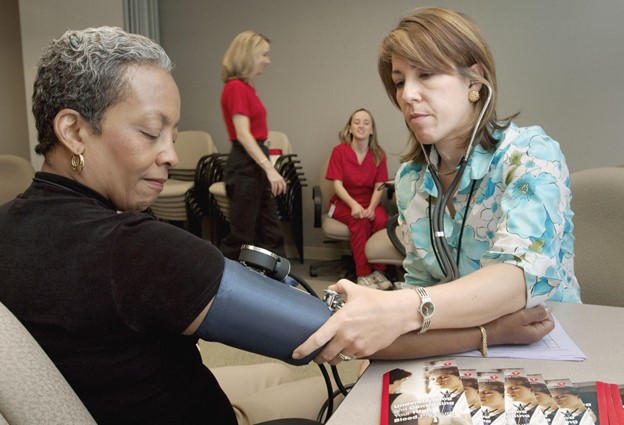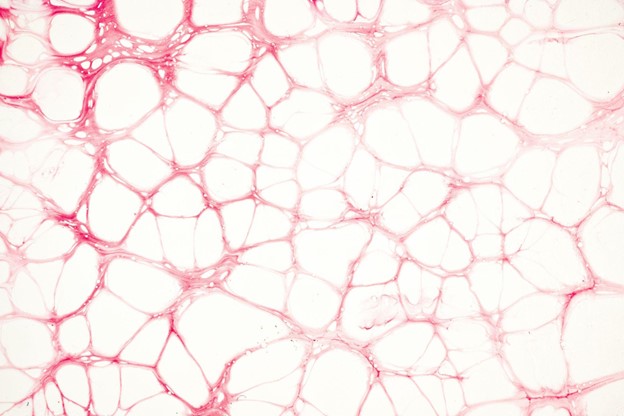
Angiotensin II: How This Peptide Contributes to Blood Pressure

Angiotensin is a peptide hormone that plays a part in the renin-angiotensin-aldosterone (RAAS) system. This peptide helps your body regulate blood pressure by narrowing the blood vessels, as well as triggering the intake of salt and water. Sometimes, our angiotensin levels can become low, resulting in adverse symptoms and conditions. As such, it’s essential to maintain proper levels of this peptide. Let’s discuss how it works in more detail.
What is Angiotensin?
Angiotensin is a peptide endocrine hormone and a vasoconstrictor. As a hormone, angiotensin acts as a messenger in the body, coordinating functions by delivering signals to the organs and muscles via the blood. These messages tell your body what actions to take and when.
Angiotensin, in particular, is responsible for regulating your blood pressure by initiating the intake of water and salt and constricting the blood vessels. There are four forms of angiotensin – I, II, III, and IV. Angiotensin II is the active and main form.
The RAAS System

To fully understand angiotensin II, we must discuss the renin-angiotensin-aldosterone (RAAS) system. This system is made up of an intricate group of enzymes, proteins, hormones, and reactions. The system kicks off when the blood pressure falls, stimulating the sympathetic nervous system. The kidneys respond by releasing renin, an enzyme, into the bloodstream.
That enzyme activates a protein made in the liver called angiotensinogen, which renin splits apart. A piece of that is angiotensin I. This variation of angiotensin is inactive – it has no effects. Instead, it flows through the bloodstream before coming into contact with the angiotensin-converting enzyme (ACE). ACE is found in the lungs and kidneys and splits angiotensin I, with one of the resulting pieces being angiotensin II. This is the active version of the hormone.
Now that the RAAS system has created angiotensin II, the peptide can spring into action and do its job. Angiotensin II forces the muscular walls of the arterioles (small arteries) to constrict, which then increases blood pressure. At the same time, this peptide sends two signals. The first is to the pituitary gland, telling it to release the antidiuretic hormone, also known as ADH or vasopressin. The second signal goes to the adrenal glands, telling them to release aldosterone.
From there, aldosterone triggers the kidneys to release potassium through urine. Meanwhile, aldosterone also works with ADH to make the kidneys retain sodium, which in turn causes water retention. As a result of these changes, blood pressure and blood volume are increased, which completes the RAAS system. It’s also worth noting that this system can be activated by thyroid hormones, estrogen, and corticosteroids. If any element of the system experiences an issue, the blood pressure can be impacted, as well as sodium and potassium levels.
What Does Angiotensin II Do in the Body?
Angiotensin II plays many roles in the body but is primarily known for increasing blood volume, blood pressure, and sodium levels. This peptide acts by binding to receptors throughout the body, which allows it to affect various systems and their functions. This includes:
- Boosting blood pressure by narrowing the blood vessels
- Facilitating the release of antidiuretic hormone via the pituitary gland, which then causes the kidneys to reabsorb water
- Facilitating the release of aldosterone in order to make the body retain sodium and lose potassium via the urine
- Using the hypothalamus to trigger the sensation of thirst
- Stimulating the desire for sodium via the hypothalamus
Imbalances in Angiotensin II
When angiotensin II levels are out of balance, we can have mild symptoms as well as more severe consequences.
When angiotensin levels are low, you may experience:
- Low sodium levels (hyponatremia)
- Water loss via urine
- Elevated potassium levels (hyperkalemia)
- Low blood pressure
Low blood pressure, hyperkalemia, and hyponatremia all come along with their own symptoms. This can include:
- Blurred vision
- Dizziness
- Fatigue
- Lethargy
- Nausea
- Vomiting
- Chest pain
- Heart arrhythmia or palpitations
- Abdominal pain
- Diarrhea
- Muscle cramps
- Headache
- Confusion
- Seizures
On the other hand, when angiotensin II levels are high, you can experience water retention and high blood pressure. In the worst cases, this can lead to heart failure. Additionally, there is evidence that excess angiotensin can contribute to growth in heart size.
Uses for Angiotensin II

Angiotensin II plays a multifaceted role within the renin-angiotensin-aldosterone system (RAAS). This complex hormonal system is crucial for regulating blood pressure and fluid balance. Let’s break down how it works:
- Peptide Powerhouse: Angiotensin II is a potent, active peptide formed from a series of conversions involving angiotensin peptides (including angiotensin I and angiotensin III). Its complex structure includes several amino acids.
- Multi-Target Action: Angiotensin II acts on various targets to increase blood pressure:
- Blood Vessels: It directly constricts blood vessels, especially the efferent glomerular arterioles.
- Adrenal Cortex: It stimulates aldosterone release, promoting sodium and water retention.
- Nervous System: It increases thirst and sympathetic nervous system activity.
- Angiotensin Receptors: It binds to specific receptors, triggering a cascade of cellular effects.
Uses for Ang II
- Synthetic Angiotensin II: This medication provides a lifeline in conditions like septic shock, where dangerously low blood pressure is a major concern. It’s administered as an Angiotensin IV.
- Managing High Angiotensin II: When levels are chronically elevated, medications like ACE inhibitors and angiotensin receptor blockers can be prescribed. It’s worth noting that these medications can sometimes lead to higher-than-normal potassium levels, requiring monitoring.
Beyond Blood Pressure
Research hints at potential roles for Angiotensin II in tissue growth, inflammation, and even the actions of natriuretic peptides (which counterbalance its effects). Understanding its far-reaching influence holds promise for developing new therapies in the future.
Understanding the Origins of Angiotensin II
- Renin: The Initiator: The journey to Angiotensin II begins with an enzyme called renin, released by the kidneys in response to factors like low blood pressure. Renin secretion is a tightly regulated process, ensuring the RAAS system responds appropriately to the body’s needs.
- The Amino Acid Connection: Renin angiotensin system acts on a precursor protein called angiotensinogen (produced by the liver). This initial step cleaves a specific N-terminal amino acid sequence, starting the process that ultimately leads to the active Angiotensin II peptide.
Angiotensin II and the Vascular System
- Targeting Smooth Muscle Cells: While Angiotensin II constricts blood vessels throughout the body, its effects on vascular smooth muscle cells are particularly important for regulating arterial pressure.
- Beyond Simple Constriction: Research suggests Angiotensin II might also influence vascular health in the long term, potentially contributing to conditions like atherosclerosis. This highlights how a simple peptide can have cascading effects on overall health.
At the end of the day, angiotensin II plays a critical role in arterial blood pressure and the RAAS system. When out of balance, it can have serious consequences. Be sure to work with your primary care physician before using this medication or schedule a consultation with one of our health consultants.
KIYA Longevity provides innovative best-in-class peptide products that meet the highest standards for safety and purity at a fraction of the cost.CerebroPep PEPTIDE (1ST NEURO
PEPTIDE)BPC-157 PURE PEPTIDE (IMMEDIATE
RELEASE)BPC-157 PURE Oral Spray (RAPID
ABSORPTION)KPV PEPTIDE (RAPID ABSORPTION)TB4-FRAG MAX PEPTIDE (HEALING AND
RECOVERY)THYMOGEN ALPHA-1 (IMMUNE SUPPTORT)Weight Loss Peptide “Can’t Weight”
Questions about other peptides? Check out Kiya Longevity’s Peptide Guide.
Resources:
https://www.sciencedirect.com/topics/medicine-and-dentistry/angiotensin
